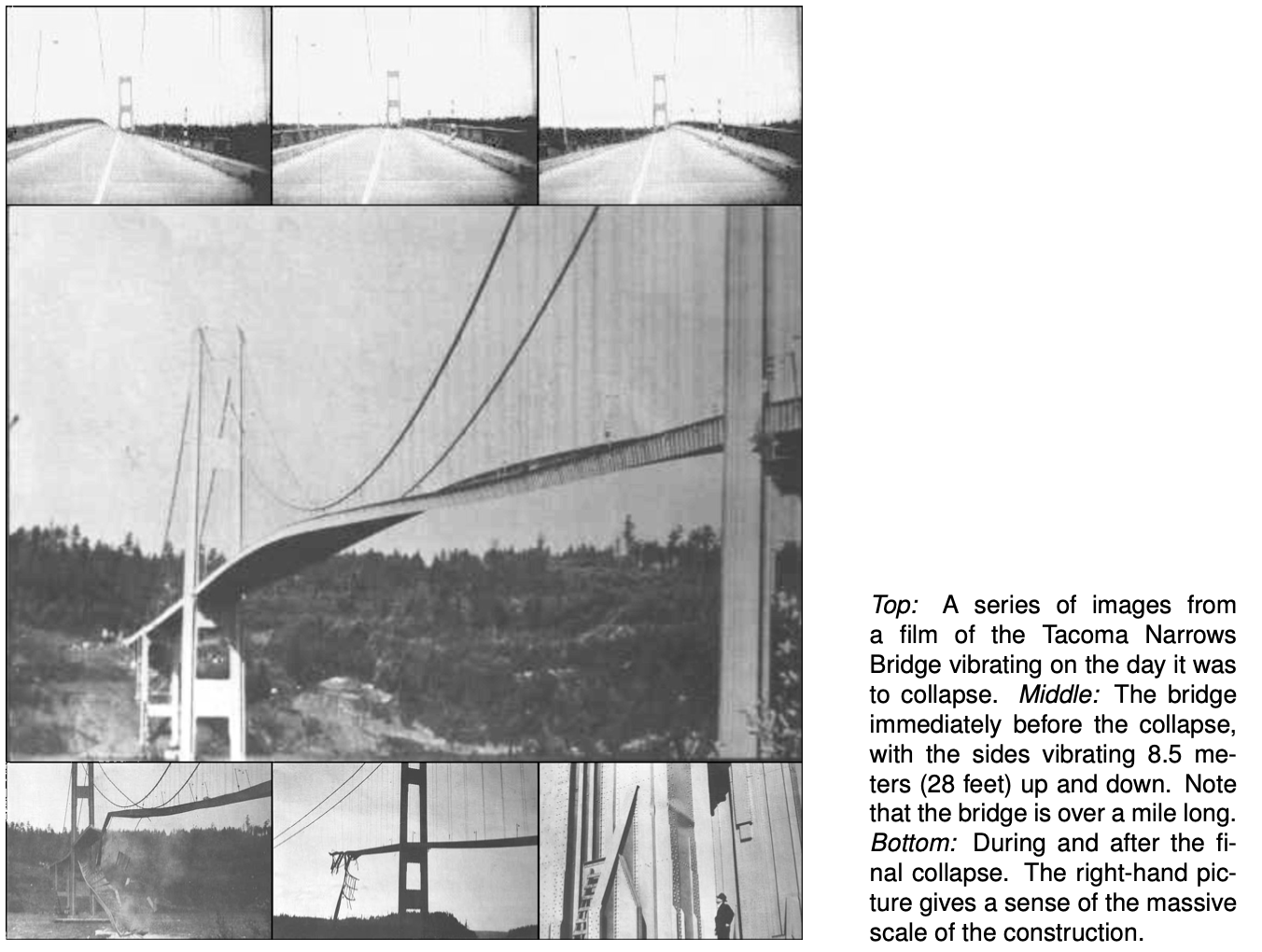LM 18.0 Resonance Collection
18. Resonance by Benjamin Crowell, Light and Matter licensed under the Creative Commons Attribution-ShareAlike license.
Chapter 18. Resonance

Soon after the mile-long Tacoma Narrows Bridge opened in July 1940, motorists began to notice its tendency to vibrate frighteningly in even a moderate wind. Nicknamed “Galloping Gertie,” the bridge collapsed in a steady 42-mile-per-hour wind on November 7 of the same year. The following is an eyewitness report from a newspaper editor who found himself on the bridge as the vibrations approached the breaking point.
“Just as I drove past the towers, the bridge began to sway violently from side to side. Before I realized it, the tilt became so violent that I lost control of the car... I jammed on the brakes and got out, only to be thrown onto my face against the curb.
“Around me I could hear concrete cracking. I started to get my dog Tubby, but was thrown again before I could reach the car. The car itself began to slide from side to side of the roadway.
“On hands and knees most of the time, I crawled 500 yards or more to the towers... My breath was coming in gasps; my knees were raw and bleeding, my hands bruised and swollen from gripping the concrete curb... Toward the last, I risked rising to my feet and running a few yards at a time... Safely back at the toll plaza, I saw the bridge in its final collapse and saw my car plunge into the Narrows.”
The ruins of the bridge formed an artificial reef, one of the world's largest. It was not replaced for ten years. The reason for its collapse was not substandard materials or construction, nor was the bridge under-designed: the piers were hundred-foot blocks of concrete, the girders massive and made of carbon steel. The bridge was destroyed because of the physical phenomenon of resonance, the same effect that allows an opera singer to break a wine glass with her voice and that lets you tune in the radio station you want. The replacement bridge, which has lasted half a century so far, was built smarter, not stronger. The engineers learned their lesson and simply included some slight modifications to avoid the resonance phenomenon that spelled the doom of the first one.
18. Resonance by Benjamin Crowell, Light and Matter licensed under the Creative Commons Attribution-ShareAlike license.
Calculators and Collections
- Comments
- Attachments
- Stats
No comments |
